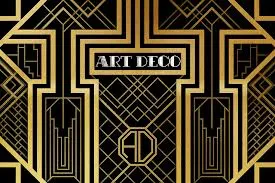Lighting can be one of the most complex elements of good design. And understanding the technical values of lighting – Kelvins, CRI, Lumens, Beam Angle, Photometrics and so on make selecting the optimum layout and fixtures definitely seem overwhelming and is somewhat of an acquired science.
I began to study lighting after I was bitterly disappointed with the final results of a major kitchen renovation for a client. Not understanding lighting overly well I referred to the selections and choices made by the homeowner and electrician. Relying on others for their expertise is a common practice in the kitchen and bath industry, right? However, when it comes to making fixture choices there has rarely ever been a circumstance that an electrical trade professional has selected an optimal fixture. But in their defense, fixture choices are not the primary goal but to provide adequate lighting, a safe and reliable products and to ensure that everything works as intended. Although I don’t fault these goals I do challenge their “go-to” choices frequently. In order to have this tough conversation, you need to have some compelling information in order to adjust their thinking.
Fixture selection is one of the biggest challenges especially when light levels in a kitchen are so critical. Creating ideal circumstances for meal preparation (i.e. chopping, measuring) and other detailed activities the need for an abundance of light is important for both functionality and safety.
It is the actual fixture selection that dictates the lamps used or as so many fixtures now come as a fully integrated unit (meaning IT is the lamp/fixture as a whole unit), choosing the best options requires a few basic parts of understanding. The main “go-to” recessed pot light for so many electricians is, what I call, the glowing disc of light. These fixtures (shown on top) come in a variety of colour temperatures (Kelvin) from 3000K – 6500K, have a 50,000-hour life span, are readily available at almost any supplier including big box stores, easy to install, and so on and so on. So what is it that make these fixtures fall short? I’m so glad you asked!!

For all intents, the fixtures look pretty similar. They both are low profile, long life, have multiple colour temperature options, good CRI, and are similar in cost (two products shown are very close to similar costs). The difference comes in the performance.
The reveal comes in the photometric charts. When comparing the value of light or the lux that reaches a surface 1 – 1.2 meters away from the light source the numbers tell the whole story. As you can see in the photometric charts below the drop of lux for fixture 1 which started at 613 lux at the fixture to 1 m away, at 307 lux, decreased by almost 50%! Where fixture 2 starts at 1600 lux only reduced by less than 10% at 1.2 m away, 1526 lux!! Fixture 2 has calculations further away and has less loss of lux.

Woah! Wait a minute. What does this actually mean? It translates in the simple fact that fixture 1 will have MUCH less actual light reach the kitchen counter compared to fixture 2. It is in this dramatic reduction that compromises true light quality in our designs and affects functionality.
Once you understand the value of these calculations it is impossible to go back to “whatever” is installed by the electrician! Don’t get me wrong, I have the greatest respect for all my trades and could NOT do anything without their expertise, but selecting fixtures is not part of that list!
Time to have that tough conversation with your electrician. If lighting isn’t in your wheelhouse there are plenty of lighting experts that would love to introduce you and your trade team to a whole collection of great products that offer much better QUALITY lighting. Don’t you owe it to your clients, yourself, and your EYES!










